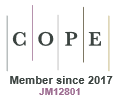Actinomycetes: what more can they offer in an era of metabolic engineering and artificial intelligence?
İpek Kurtböke A *A

Assoc. Prof. İpek Kurtböke has been working in the field of biodiscovery and has been an active member of the international actinomycete research community since 1982. She currently conducts research and teaches in the field of applied microbiology and biotechnology at the University of the Sunshine Coast, Qld. She is an active member of the World Federation of Culture Collections (WFCC) and currently is the president. She was also an editorial board member of Microbiology Australia for 21 years (2004–24). |
Abstract
Actinomycetes are ubiquitous bacteria found in many different niches with superior metabolic capabilities resulting in the production of many potent bioactive compounds. Since the 1940s, most notably, the members of the order Streptomycetales have yielded many clinically important antibiotics and antimicrobial compounds starting with actinomycin and streptomycin. In this paper, recent advances in metabolic engineering as well as the use of artificial intelligence will be discussed as they are undoubtedly increasing the chances of discovery of novel bioactive compounds from the unexhausted natural product machinery of actinomycetes.
Keywords: actinomycetes, antibiotics, artificial intelligence, machine learning, metabolic engineering, secondary metabolism, Streptomyces, streptomycetes.
 Assoc. Prof. İpek Kurtböke has been working in the field of biodiscovery and has been an active member of the international actinomycete research community since 1982. She currently conducts research and teaches in the field of applied microbiology and biotechnology at the University of the Sunshine Coast, Qld. She is an active member of the World Federation of Culture Collections (WFCC) and currently is the president. She was also an editorial board member of Microbiology Australia for 21 years (2004–24). |
References
1 Kurtböke İ (2012) From Actinomycin onwards: actinomycete success stories. Microbiol Aust 33, 108-110.
| Crossref | Google Scholar |
2 Kurtböke İ (2010) Biodiscovery from microbial resources: actinomycetes leading the way. Microbiol Aust 31, 53-56.
| Crossref | Google Scholar |
3 Takahashi Y, Nakashima T (2018) Actinomycetes, an inexhaustible source of naturally occurring antibiotics. Antibiotics 7, 45.
| Crossref | Google Scholar |
4 Alam K et al. (2022) Streptomyces: the biofactory of secondary metabolites. Front Microbiol 13, 968053.
| Crossref | Google Scholar |
5 Niu G (2018) Genomics-driven natural product discovery in actinomycetes. Trends Biotechnol 36, 238-241.
| Crossref | Google Scholar | PubMed |
6 Niu G et al. (2016) Specialised metabolites regulating antibiotic biosynthesis in Streptomyces spp. FEMS Microbiol Rev 40, 554-573.
| Crossref | Google Scholar | PubMed |
7 Krysenko S (2023) Impact of nitrogen-containing compounds on secondary metabolism in Streptomyces spp. – a source of metabolic engineering strategies. SynBio 1, 204-225.
| Crossref | Google Scholar |
8 Krysenko S, Wohlleben W (2024) Role of carbon, nitrogen, phosphate and sulfur metabolism in secondary metabolism precursor supply in Streptomyces spp. Microorganisms 12, 1571.
| Crossref | Google Scholar | PubMed |
9 Xu Z et al. (2022) Metabolic engineering of Streptomyces to enhance the synthesis of valuable natural products. Eng Microbiol 2, 100022.
| Crossref | Google Scholar | PubMed |
10 Qi Y et al. (2021) A comparative metabologenomic approach reveals mechanistic insights into Streptomyces antibiotic crypticity. Proc Natl Acad Sci USA 118, e2103515118.
| Crossref | Google Scholar |
11 Xu M, Wright GD (2019) Heterologous expression-facilitated natural products’ discovery in actinomycetes. J Ind Microbiol Biotechnol 46, 415-431.
| Crossref | Google Scholar | PubMed |
12 Unno K, Kodani S (2021) Heterologous expression of cryptic biosynthetic gene cluster from Streptomyces prunicolor yields novel bicyclic peptide prunipeptin. Microbiol Res 244, 126669.
| Crossref | Google Scholar | PubMed |
13 Hashimoto T et al. (2020) Novel macrolactam compound produced by the heterologous expression of a large cryptic biosynthetic gene cluster of Streptomyces rochei IFO12908. J Antibiot 73, 171-174.
| Crossref | Google Scholar | PubMed |
14 Gomez-Escribano JP et al. (2019) Heterologous expression of a cryptic gene cluster from Streptomyces leeuwenhoekii C34T yields a novel lasso peptide, leepeptin. Appl Environ Microbiol 85, e01752-19.
| Crossref | Google Scholar | PubMed |
15 Ahmed Y et al. (2020) Engineering of Streptomyces lividans for heterologous expression of secondary metabolite gene clusters. Microb Cell Fact 19, 5.
| Crossref | Google Scholar |
16 Akhgari A et al. (2022) Single cell mutant selection for metabolic engineering of actinomycetes. Metab Eng 73, 124-133.
| Crossref | Google Scholar | PubMed |
17 Xia H et al. (2020) The application of regulatory cascades in Streptomyces: yield enhancement and metabolite mining. Front Microbiol 11, 406.
| Crossref | Google Scholar | PubMed |
18 Ye L et al. (2022) Transcriptome-guided identification of a four-component system, SbrH1-R, that modulates milbemycin biosynthesis by influencing gene cluster expression, precursor supply, and antibiotic efflux. Synth Syst Biotechnol 7, 705-717.
| Crossref | Google Scholar | PubMed |
19 Lyu ZY et al. (2022) Improving the yield and quality of daptomycin in Streptomyces roseosporus by multilevel metabolic engineering. Front Microbiol 13, 872397.
| Crossref | Google Scholar |
20 Li X et al. (2024) Metabolic engineering of Streptomyces roseosporus for increased production of clinically important antibiotic daptomycin. Microb Biotechnol 17, e70038.
| Crossref | Google Scholar | PubMed |
21 Bilyk O, Luzhetskyy A (2016) Metabolic engineering of natural product biosynthesis in actinobacteria. Curr Opin Biotechnol 42, 98-107.
| Crossref | Google Scholar | PubMed |
22 Heng E et al. (2021) CRISPR-Cas strategies for natural product discovery and engineering in actinomycetes. Proc Biochem 102, 261-268.
| Crossref | Google Scholar |
23 Meng J et al. (2017) Improvement of pristinamycin I (PI) production in Streptomyces pristinaespiralis by metabolic engineering approaches. Synth Syst Biotechnol 2, 130-136.
| Crossref | Google Scholar | PubMed |
24 Li L et al. (2015) A stepwise increase in pristinamycin II biosynthesis by Streptomyces pristinaespiralis through combinatorial metabolic engineering. Metab Eng 29, 12-25.
| Crossref | Google Scholar | PubMed |
25 Yushchuk O et al. (2020) New molecular tools for regulation and improvement of A40926 glycopeptide antibiotic production in Nonomuraea gerenzanensis ATCC 39727. Front Microbiol 11, 8.
| Crossref | Google Scholar | PubMed |
26 Fazal A et al. (2020) A chromatogram-simplified Streptomyces albus host for heterologous production of natural products. Antonie Van Leeuwenhoek 113, 511-520.
| Crossref | Google Scholar | PubMed |
28 Wang S et al. (2024) Unleashing the potential: type I CRISPR-Cas systems in actinomycetes for genome editing. Nat Prod Rep 41, 1441-1455.
| Crossref | Google Scholar | PubMed |
29 Ang WS et al. (2024) Unleashing the power of artificial intelligence-driven drug discovery in Streptomyces. Prog Microbes Mol Biol 7(1), a0000453.
| Crossref | Google Scholar |
30 Trafton A (2020) Artificial Intelligence Yields New Antibiotic. A deep-learning model identifies a powerful new drug that can kill many species of antibiotic-resistant bacteria. MIT News Office, 20 February 2020. Massachusetts Institute of Technology. https://news.mit.edu/2020/artificial-intelligence-identifies-new-antibiotic-0220
31 Booq RY et al. (2021) Assessment of the antibacterial efficacy of halicin against pathogenic bacteria. Antibiotics 10, 1480.
| Crossref | Google Scholar | PubMed |
32 Liu G et al. (2023) Deep learning-guided discovery of an antibiotic targeting Acinetobacter baumannii. Nat Chem Biol 19, 1342-1350.
| Crossref | Google Scholar | PubMed |
33 Arnold A et al. (2023) Applications of machine learning in microbial natural product drug discovery. Expert Opin Drug Discov 18, 1259-1272.
| Crossref | Google Scholar | PubMed |
34 Rekadwad BN et al. (2022) Uncultured Actinobacteria and reverse engineering and artificial intelligence role in future. In Actinobacteria (Karthik L, ed.). Springer, Singapore. 10.1007/978-981-16-5835-8_11
35 Walker AS, Clardy J (2021) A machine learning bioinformatics method to predict biological activity from biosynthetic gene clusters. J Chem Inf Model 61(6), 2560-2571.
| Crossref | Google Scholar | PubMed |


